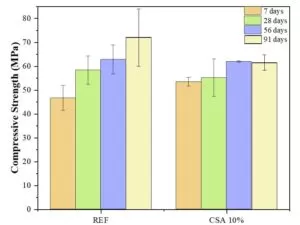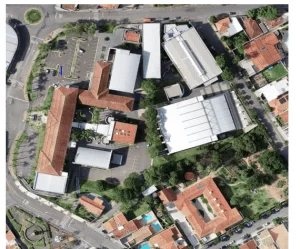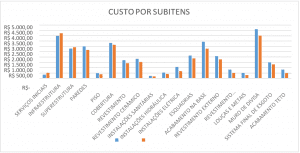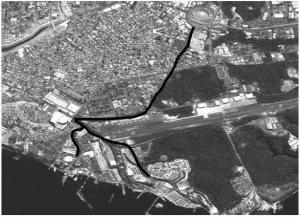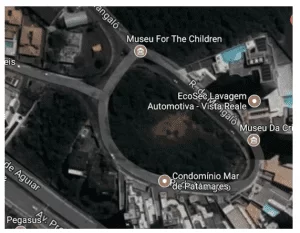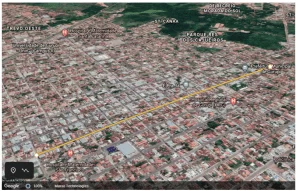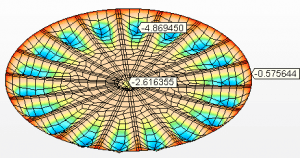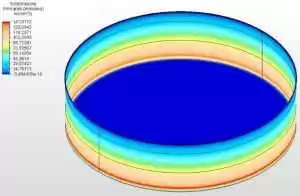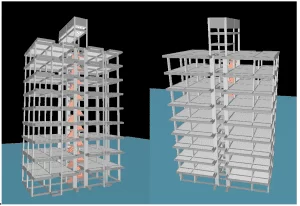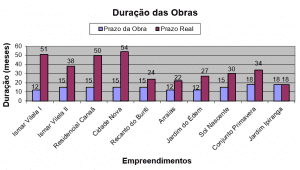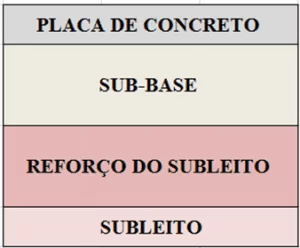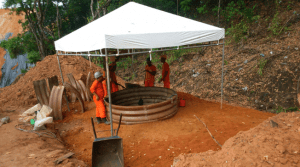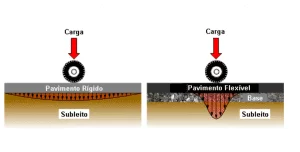REVIEW ARTICLE
CECÍLIO, Ana Beatriz Garcia Amaral [1], FERNANDES, Matheus Luis [2], FERNANDES NETO, Marcolino [3], ORRÚ, Alice Perucchetti [4], CARVALHO, Rogério de Souza [5]
CECÍLIO, Ana Beatriz Garcia Amaral. Et al. Technological innovations in civil construction. Revista Científica Multidisciplinar Núcleo do Conhecimento. Year 05, Ed. 12, Vol. 10, pp. 54-71. December 2020. ISSN: 2448-0959, Access link: https://www.nucleodoconhecimento.com.br/civil-engineering/technological-innovations
SUMMARY
This article aims to analyze technological innovations as an integrated element in civil construction, in order to measure the benefits that technologies can add to the real estate industry. Starting, then, from this panorama, the article establishes a discussion about the advantage, contribution and economy that high technology can offer to companies and contractors of the enterprise, no longer being just a support tool for an intrinsic revolution in the construction sector. In the theoretical framework is the late entry of Brazil in technological development and the great competition in the construction market in search of improvements, in order to present the current cutting-edge technologies in the segment and an analytical study carried out for each technological innovation described. The results discussed through comparative analysis of the content present the challenges and benefits in the projection of civil engineering, in using and adapting the new technologies that the labor market provides, in order to compete for skilled labor and quality in the enterprises. Finally, the importance of innovating in the civil industry and the future expectations of innovating in the labor market are considered.
Keywords: High Technology, Civil Construction, Civil Engineering, Innovations.
1. INTRODUCTION
According to IBGE data (2020), the construction branch in Brazil had a demonstrative growth in GDP (Gross Domestic Product) of 1.6% compared to 2018, strongly impacting the exit from the red that the country positioned itself 5 years ago.
A survey conducted by Autodesk (2020), warns that, even with the growth of the constructive economy, Brazil is the country with the lowest level of technological maturity in the world civil industry and the lack of technological resources harms the productivity of civil construction.
However, Autodesk (2020) states that Brazil is a leader in investments in platforms based on BIM (Building Information Modeling), an integrated and efficient tool for organizing essential construction details and information.
Building Connected CEO Dustin DeVan (GALO, 2020) says that for higher construction productivity, companies need to embrace the digital world as an essential alternative to the development of real estate infrastructure.
This work brings in its development a study of the application of new technologies and measures the benefits that the following items can bring to Civil Construction: new technologies in software platforms, advanced devices in green beds, drones and the rise of augmented reality.
According to Techne (2012), the use of technology demonstrates positivity in the development of processes and products. Over time, construction companies have adapted to the use of new technological equipment, however, it is not enough only to use these technological resources if there is no efficient model of information management, integrating it with the devices and users trained, because each construction site has its specific needs.
The study of technological innovation in civil construction is extremely important for the market. The technology is present in all segments and would be no different in construction. With the intelligent use of technological resources, significant results are provided in the elaboration of the works.
2. GOALS
2.1 OVERALL OBJECTIVE
The present work aims to discuss the current technologies in the labor market in the area of civil construction, demonstrating new scenarios for construction with regard to the processes of the construction stages based on the insertion of technology to improve the management, design and projection of the enterprise.
2.2 SPECIFIC OBJECTIVES
– Analyze existing technologies in the current market;
– Identify the profile of each existing technology;
– Identify the positive action of technology in environmental media;
– Analyze the perception of technology in the future.
3. METHODOLOGY
The study is characterized as a descriptive process and a systematic approach, with exploratory physiognomy, based on bibliographies, scientific articles, specialized journals and research sites on Technologies in Civil Construction. According to Boccato (2006), bibliographic research has as emphasis problem solving, through published theoretical references, to analyze and discuss the possible solutions of a given theme.
In order to follow the concept described above, this article used as a methodology, as a basis in the theoretical framework, comparations of activities performed in civil construction without and with the insertion of technology to improve and expedite the progress of works, possible future applications, with evidence in the feasibility within the real estate sector. Finally, the results and final discussions on the repercussion of technology on civil construction are presented.
4. THEORETICAL FRAMEWORK
4.1 TECHNOLOGIES IN CONSTRUCTION SITES
Souza et. al. (2013) state that the construction site consists of elements that contribute, directly or indirectly, to the implementation of the building. However, the realization of the projection of a construction site requires considering it not only as a set of static elements placed correctly, but also as a dynamic and complex process.
According to Pereira and Alencar (2019), most companies seek as a goal to increase their productivity in construction to reduce costs and expenses, through advanced technological alternatives in civil construction. Consequently these resources generate greater efficiency of construction companies and speed in construction processes.
Mercado and Kullok (2004), states that the digital age has totally changed the field of engineering, shortening the distance between works, engineers and owners, integrating them through computer as the main source of economic globalization.
According to Zaparolli (2019), Brazilian construction, even if delayed worldwide, finally begins to incorporate technological trends in the digital market, where in other sectors its development is already frequent. Thus projects formulated in digital environments that allow the control of works and employees, have become tools that begin to enter construction sites from 2019.
4.2 THE GUARDIAN XO
According to Balwin (2020), with so many technological advances, the American robotics company Sarcos, specializing in military devices and national security, has developed a full-body exoskeleton, called The Guardian XO, which allows construction workers to carry masses of up to 90 kg for long spaces of time, in order to reduce physical stresses.
Figure 1 shows the robotic device that allows workers to carry approximately 90 kg for long periods of time.
Figure 1: The Guardian XO of the company SARCOS

Source: Balwin (2020)
According to NR 17.2.2 (2018), manual transport of loads should not be required or allowed by a worker whose weight is likely to compromise his health or safety (117.001-5 / I1).
4.3 BIM – BUILDING INFORMATION MODELING
According to Zaparolli (2019), the BIM platform is currently one of the tools most used by civil engineers, it facilitates the convergence of projects, such as electrical, hydraulic, foundation, environment layout and work architecture. In addition to contributing to improve the performance of the project, BIM also provides efficiency in the elaboration of a construction site, giving a greater opening for more information, safety and agility in the processes.
According to Zaparollli (2019), the platform, in addition to assisting in the formulation of the construction site body, also contributes to the communication of construction workers with office personnel in real time. Figure 2 shows the BIM platform programs that can be used.
Figure 2: BIM platform programs can be used.
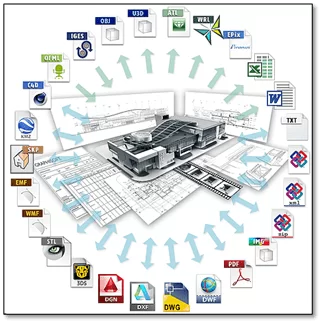
According to Farias (2013), from 2021, by requirement of the Federal Government in decree 10,306 of April 2, 2020 (mandatory to use BIM in works of public agencies), 3D modeling will be mandatory in Civil Engineering and Architecture, with a goal that 50% of the GDP of civil construction apply the technology by 2024. According to the Brazilian Agency for Industrial Development – ABCI (2019), a 10% increase in productivity and cost reduction can reach 20% per year is prospered with the use of BIM.
The 3D scan, Muller (2015), allows a topographic survey of the lot, forming a three-dimensional view of the structure, when combining this technology with BIM, a more accurate and accurate view of the work is obtained, helping engineers, architects and designers to formulate an ideal construction project to the lot and remedy future implementation problems.
4.4 SIENGE PLATFORMS
According to AEBWEB (2020), Sienge is a software platform created by Softplan/Poligaph, launched to assist in various processes within a construction site.
Among the innovations attributed to this tool, Carlos Augusto de Matos, director of the Construction Industry Unit at Softplan/Poligraph highlights the Journal of Works, which provides the contractor with mobile access, through electronic devices such as tablets and smartphones, to the records of updated works (AECWEB, 2020)
Sienge enables the organization of different databases of insums and services used in its works, allowing the creation of its own compositions or compositions of references (SIENGE, 2019). The platform aims to:
- Greater control in the creation of insums, with differentiated prices according to brands and details;
- Organization of the insums and services by groups, facilitating the updating of prices and analysis in reports;
- Administration of the prices of its supplies according to the updates and prices addressed in the Purchasing or Supplies sector;
- Import of data from insum, services and compositions of tables, whether own or references;
- Import of SINAPI tables interconnected with caixa Econômica Federal website.
4.5 AUGMENTED REALITY
According to Sherman and Craig (2003), augmented virtual reality is a set of interactive simulations generated on computers to get the feeling of being mentally and physically immersed in simulations of future endeavors, providing the user with a digital informational scope.
According to Souza (2019), the usual DAQRI Smart Helmet augmented reality smart helmet visualizes 3D designs and models on large scales, comparing the actual work with the original project of the work, generating a totally digital flow between employee and the office. Figure 3 shows the use of the Daqri Smart Helmet.
Figure 3: DAQRI Smart Helmet
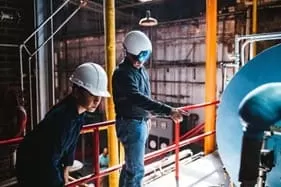
Souza (2019), also cites augmentand gamma ar applications as interaction platforms. AUGMENT, Figure 4, is an app that allows the user to view the project in real scale 3D, available for Android and IOS system and mainly used by engineering companies for sales. The GAMMA AR app, Figure 5, allows the visualization of water, sewage and gas pipes, in addition to overfitting the floors in 3D.
Figure 4: AUGMENT Application
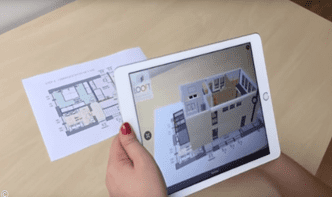
Source: Souza (2019)
Figure 5: GAMMA AR Application
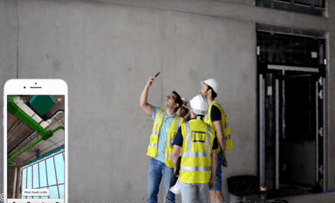
Source: Souza (2019)
4.6 DRONES
According to Zaparolli (2019), drones, small aircraft that were created in the military and today became popular, can measure the perimeter of the construction, transmit exact coordinates, generate aerial images and monitor the construction sites. Over time the use of drones has become the most viable way to obtain real-time images of buildings, in addition to attracting more attention from clients in real estate.
The company Maply Tecnologia performs aerial monitoring and mapping so that all schedules are kept up to time, using an application for the management of the beds, through QR Code labels, viewing on tablets and mobile phones the site completely. According to Maply (2020), the application optimizes data collection time, reduces about 90% of impressions on roles and focuses energy on essential activities.
Figure 6 shows an operator manipulating a drone at a construction site.
Figure 6: Drone in construction
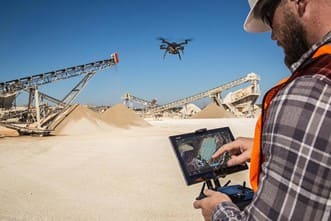
Source: Globaltec (2020)
4.7 GREEN BEDS
According to Gallo (2020), works in areas with fauna and flora generate many environmental impacts and interferences in the ecosystem, in view of this it is possible to use advanced technologies to reduce actions that harm animals and the environment.
According to Diário do Comércio (2019), andrade Gutierrez, with more than 70 years of experience in environmental areas, stands out for being one of the largest engineering companies in Latin America that has developed sustainably, prioritizing quality and social and environmental responsibility.
The S11D, in Carajás – PA, is the largest mining complex in the history of Vale, which was built by contractor Andrade Gutierrez in 2017. The contractor started at the Construction Site of the S11D with the acquisition of the UAV (unmanned aerial vehicle), in which the qualities of the captured images are superior to those of drones, in addition to covering a vast area (ANDRADE GUTIERREZ, 2018).
According to Andrade Gutierrez (2020), during the works of the Port of Imbituba – SC, the company used the bubble curtain technology to prevent the noises caused by the works reaching the whales and affecting the communication of the animals, in addition to using monitoring via flags and radio informing the movement of the whales so that the works were stopped.
5. RESULTS AND DISCUSSION
Since the beginning of the 21st century, companies in the construction sector face a moment of transition, evidenced by more demanding consumers, greater competition and discredit of organizations. In this scenario, institutions need to prioritize the improvement in the quality of buildings, modernization of processes and innovation, which leads to the development of new products (SALLES, 2013; POTT; EICH; ROJAS, 2017; PEREIRA, ALENCAR, 2019).
Pereira and Alencar (2019) affirm that investing in technology is essential for these three requirements – quality improvement, modernization and innovation – because it enables the development and use of modern and innovative materials and processes. This generates higher quality buildings, erected through agile projects and with reduced cost.
Considering that the construction sector comprises a range of services that requires a diverse team of professionals, services and materials that meet the demand of the sector, the research shows that many advances have occurred since the Third Industrial Revolution transforming the construction sector that currently have a technological collection that contribute to the speed and quality of production.
Over the years, in organizations, the work process, especially in civil construction, has undergone great changes that have appreciably affected man (CHIAVENATO 2008, p. 479 apud FONSECA; Gonçalves; RODRIGUES, 2012).
According to Balwin (2020), the volume of production maximizing the speed of work is a factor with greater attribution of increased work accidents. In this context, the exoskeleton of The Guardian XO of the company SARCOS, can contribute to the area of civil construction, because the weight of the costume and the loads transported are transferred through the structure of the exoskeleton to the ground. The Company Sarcos says the equipment contains a “set of sensors integrated into the exoskeleton, allowing the operator to intuitively control the robot in a way that harnesses its instincts and reflexes and minimizes the need for human training.” Thus, the said robot is able to amplify human strength in the ratio of 20 to 1, a 50 kg cement bag will represent 2.5 kg for those operating the device.
According to Manzione and Melhado (2014), BIM is still in an early stage in Brazil and teams continue to work individually and with exchanges of information only in the moments of key events of compatibilization. In practice, it continues to work in a conventional way, which makes the execution phase of the project a hard work with regard to planning, control of the work, survey of material quantitative, budget, among others.
According to Formoso (2001), deficiencies in planning and control are among the main causes of the low productivity of the sector, its high losses and the low quality of its products.
Because it is a modeling technology where it aims to work in an internal way, it is not what occurs in most projects, such as Manzione and Melhado (2014), they claim “it is still in an early stage”, they are not all builders that have a BIM team, and is also represented by a small share of the market.
Horngren et al. (1990) identify the cost management system with a structure that organizes company data and cost information, in which it presents as key tasks, cost estimates for products and services, making available to managers information relevant to decision-making associated with the present and future. According to Berliner and Brimson (1998), BIM consists of a set of principles, methods and tools to support management decision-making and evaluating opportunities.
And one of the tools that stand out and needs to be commented is Sienge Plataformas which assists various processes in civil engineering in construction sites, making the work more objective, maximizing processes and reducing costs.
According to Barducco and Constâncio (2019), with the advancement of technologies, several management mechanisms have emerged, which help all sectors of organizations. When it comes to planning, software such as the Sienge platform, deliver to the customer all the necessary structure for the preparation of budgets, supply management, purchasing, sales and customer relationship, financial and quality control, which separated by modules, can be composed according to the user’s need.
Other software is available in the market and assists the project team in the preparation of planning, such as “Cote Aqui”, which assists the user in making decisions regarding the choice of suppliers for purchases; o “Work Management”, which, in relation to planning, assists the user in the preparation of the budget, supplier registration, financial, supply management, analogous to the Sienge method (SIENGE, 2019).
According to Thomé (2019), augmented reality inserts digital elements into physical reality. For example, from a footage of an empty room, an application might be able to insert paint colors into the walls so that the user can analyze how such a choice would look before executing it.
3D modeling uses software to create a mathematical representation in a three-dimensional way. Alves (2018) states that some modeling software allows 3D models to be shared and viewed anywhere, especially on the construction site. In this way, the project can be changed or updated in real time, inaccurate data and calculations can be hastily corrected and the company avoids rework in several steps that would eventually generate extra costs and delays in execution.
According to Barducco and Constâncio (2019), centralized communication applications, in the early stages of the project, are useful to streamline the necessary documentation, organize and generate reports in a few seconds. This procedure keeps the information and documents gathered and stored in the cloud safely and easily to all stakeholders in the project.
For Moraes (2018), seeking increasingly agile and effective ways of project management is the company’s own business. Throughout the project management cycle, the volume of hours worked can be reduced from 25% to 35%, reaching up to 50%, depending on the type of project, using the Construct App software.
According to Thomé (2016), the ideal project carried out in BIM aggregates all the parties involved in the planning of a construction, granting detailed information about each stage of construction and making available to all involved. In addition to facilitating data such as wall dimensions and pipe location, it provides information related to types and quantities of supplies and labor, for example.
The author also states that BIM resembles 3D modeling, but with the application of the new technology are added other information that only BIM provides. For example, you can add information about materials, costs, and other specifications (THOMÉ, 2016).
Porto (2016) shows that working with BIM technology the designer can define as many parameters as he deems necessary and clearly visualize the views of the project. In the case of a wall, in addition to the thickness and height, the materials used, the coating layers, the finish, manufacturers, thermoacoustic properties and any other information that is desired to be added are defined. In addition, due to the parameterized structure, with a few clicks it is possible to generate plants in 2D, and any change in the main model is automatically updated to the plants and views in 2D.
According to Muller (2015), in current practice it is still common to have several parts of the project, such as architecture, facilities and structure, being developed by different teams separately. The lack of compatibility between projects requires another team to integrate, so that there is no interference in the projects. This fact does not guarantee that waste of materials and human resources occurs when there is a need to make changes in structures and components already executed. BIM, on the other hand, offers a versatile platform that gathered all the information inherent to the project in the same central model, where each team can change only its scope, cutting the pathability step and serving as a history after the project is finished.
According to Barducco and Constâncio (2019), the implementation of BIM requires an investment for new skills and resources of labor of all professionals involved in the enterprise, as the proposal is to keep everything connected and compatible, it is necessary to plan together. Thus, the entire chain of professionals must be adjusted to the new method.
In this context, Gonçalves Junior (2019) states that its application, management and use of model information, provide several uses beyond the project, such as planning, budgeting, sustainability and operation of buildings. BIM displays the following settings, 2D; 3D; 4D; 5D; 6D; and 7D, according to the author.
BIM 2D, for representation or documentation of planks, presents traditional designs in two dimensions, with planks and details. The 3D parametric model generates a virtual prototype of the building, thus enabling an analysis of interference between the elements, anticipating imperfections and bringing solutions for a more assertive execution. The 4D concept associates the model elaborated previously to the work schedule, linking tasks to time and designing a visual planning of progress of the work, allowing all professionals to follow the physical progress of each stage in real time. After associating the model designed with planning, in the definition of BIM 5D, information of the costs of the work can be added to the elements, avoiding surprises and recounting pertinent information to assist in decision making. With an information-rich model, BIM 6D addresses sustainability during the design process of a building, evaluating results and technical and financial impact quickly and economically. Finally, BIM 7D designs work completion information, facilitating the possibility of maintenance, equipment verification, manufacturer warranty and technical specifications. Thus, building managers can share information with companies that provide services even after the end of the work (GONÇALVES JUNIOR, 2019).
Drones, unmanned and remote-controlled remote-controlled aerial vehicles, which can be very beneficial in mapping the area to be built, as part of the initial study of an enterprise. With such technology, one can record by video and photos the entire area to be analyzed, useful to simulate projects with the aid of such images. Drones are also used to command autonomous vehicles, through a mobile tool. The equipment allows to do leveling studies, which give an overview of the movement of land on the ground, and may be useful in the group of initiation activities (SIENGE, 2019).
According to Barducco and Constâncio (2019), the greatest applicability of drones in civil construction is in aid of monitoring at the construction site. This equipment enables inspection in high places, difficult to access, replacing human action, reducing risks with work accidents and costs with personal and collective protective equipment, cranes, ropes, etc.
In addition, Thomé (2018) declares that they are useful equipment in the day-to-day supervision of the progress of the work. With it it is possible to monitor the productivity of employees, their adequacy with safety equipment, rationalizing the use of human resources for this purpose, being able to optimize the labor in another activity.
Augmented reality can be used, according to Barducco and Constâncio (2019), to present to the customer a digital sampling of how the work will look, after completed. In the event of a makeover, the technology allows the customer to visualize the final result within the physical environment that the reform will be performed. An example is the Augment application, which projects, through a tablet, a 3D image of a printed floor plan, in correct scale, enabling a better visualization of the project, without prototyping costs, for example.
For Lima (2019), the use of augmented reality in the execution of the work provides a more accurate view of what will be built. Through 3D plants and holograms, it is possible to better understand the project, facilitating its execution.
Melhado (2019) says that for a construction site to be considered sustainable, it is not enough just to plan and schedule environmental, social, economic, educational and cultural measures. In addition, it is necessary that these measures be present in the day-to-day work. The author walks cites actions capable of contributing to the process of implementing a sustainable construction site, such as: the Environmental Management Project; responsible purchase; the relationship with the community; ensuring occupational health and safety; the Quality Management Project; reducing material losses; solid waste management; land use and occupation (construction site implementation); reducing water waste; reducing energy consumption and transport; conservation of local fauna and flora and environmental education of employees.
6. FINAL CONSIDERATIONS
Globalization has generated significant impacts on the mode of production in the Construction segment, such as increased efficiency in the use of available resources, the change in the way data is collected and the way processes are carried out, with a significant introduction of machines with artificial intelligence in the actions performed today by humans. There has also been a significant change in business management, especially with regard to the strategy of implementation of new technologies, which requires cooperation between all sectors of companies, but mainly between the areas of information technology and the execution of works.
This technological advance results in an increasingly dynamic and accelerated business environment with regard to change. In addition to staying competitive in the market, companies need to adopt effective project management. For this, technologies that reach all project management process groups are emerging, being of great importance to assist the execution of the tasks of the project life cycle, as mentioned in the present work, which fulfilled its objective, presenting some of the tools that will collaborate with the increase of efficiency, effectiveness and effectiveness of the projects performed by the Construction Industry in the coming years.
As a suggestion of continuity, one can explore the need to change the profile of the professional who will work in the Segment of Civil Construction in the coming years, required through all the transformations already undergone, breaking the paradigms of training brought by universities today, which should go from a professional focused on the knowledge arising from his training to the adoption of a multidisciplinary profile. This corroborates the study conducted by Oliveira and Serra (2017) when they state that the contributions to the continuity of new research are comprehensive and that the use of technology in this segment only tends to grow. In addition, it would be interesting to present brazil’s development in relation to the world in the technology sector and the advantages of innovating.
7. REFERENCES
ABCI. Agência Brasileira de Desenvolvimento Industrial. Construção Civil mais inteligente, produtiva e econômica. 2019.
AECWEB. Novas tecnologias invadem canteiros de obras. 2020. Disponível em: https://www.aecweb.com.br/revista/noticias/novas-tecnologias-invadem-canteiros-de-obras/7140. Acesso em Out 2020.
ALVES, N. 5 maneiras como a tecnologia na construção civil transforma a produtividade. Construct, 17 jan. 2018.
ANDRADE GUTIERREZ. Usina do Complexo S11D. 2018. Disponível em: https://www.andradegutierrez.com.br/Projetos/UsinaComplexoS11D.aspx. Acesso em Out 2020.
AUTODESK. Ajuda do Autodesk Navisworks Simulate. 2020.
BARDUCCO, A.P.S.; CONSTÂNCIA, B.M. Indústria 4.0: tecnologias emergentes no cenário da construção civil e suas aplicabilidades. Trabalho de Conclusão de Curso apresentado ao Curso de Engenharia Civil da Universidade do Sul de Santa Catarina. 2019.
BALWIN, E. Esqueletos robóticos podem ajudar os trabalhadores da construção civil a partir de 2020. Archidaily Brasil. 2020.
BERLINER, C.; BRIMSON, J. Cost management for today’s advanced manufacturing. Boston: Harvard Business School, 1998.
BOCCATO, V. R. C. Metodologia da pesquisa bibliográfica na área odontológica e o artigo científico como forma de comunicação. Rev. Odontol. Univ. Cidade São Paulo, São Paulo, v. 18, n. 3, p. 265-274, 2006.
BRASIL. Ministério do Trabalho. Redação dada pela Portaria MTPS n.º 3.751, de 23 de novembro de 1990. NR 17 – Ergonomia (117.000-7) Portaria N.º 876, de 24 de Outubro de 2018. Altera Norma Regulamentadora NR-17- Ergonomia. Página 2239 do Judiciário do Tribunal Regional do Trabalho da 12ª Região (TRT-12) de 16 de Agosto de 2018
CHIAVENATO, I. Treinamento e desenvolvimento de recursos humanos: como incrementar talentos na empresa. 7.ed. São Paulo: Atlas, 2008.
DIÁRIO DO COMÉRCIO. TAG: Andrade Gutierrez. 2019. Disponível em: https://diariodocomercio.com.br/tags/andrade-gutierrez. Acesso em Out 2020.
FARIAS, J. Estudo de Viabilidade Técnica e Econômica do Método Construtivo Light Steel Framing numa Residência Unifamiliar de Baixa Renda. Projeto de Graduação, UFRJ, Escola Politécnica, Curso de Engenharia Civil, Rio de Janeiro, 2013.
FONSECA, A.B.; GONÇALVES, G.H.V.; RODRIGUES, C.L.P. Segurança do Trabalho na Construção Civil: Projeto de Pesquisa. Faculdade Evangélica De Goianésia – Curso de Administração. Goianésia. 2012.
FORMOSO, T. C. Planejamento e controle da produção em empresas de construção. Porto Alegre: Universidade Federal do Rio Grande do Sul. 2001.
GALLO, J.V. Sustentabilidade começa no canteiro de obras. AECweb. 2020.
GLOBALTEC. Drones na construção civil para otimizar obras. 2020. Disponível em: https://www.globaltec.com.br/2018/12/25/drones-na-construcao-civil-para-otimizar-obras. Acesso em Out 2020.
GONÇALVES JUNIOR, F. BIM: Tudo o que você precisa saber sobre esta metodologia. Mais Engenharia. 2019.
HORNGREN, C.T; FOSTER, G, SRIKANT, M.D. Cost accounting: a managerial emphasis. 7th ed. Englewood: Prentice-Hall, 1990.
IBGE. Instituto Brasileiro de Geografia e Estatística. Pesquisa Anual da Indústria da Construção. 2020.
LIMA, T. Realidade aumentada na Construção Civil. Blog Siebge. 2019.
MANZIONE, L., MELHADO, S. Nível de maturidade do processo de projeto: as quatro interfaces. XV Encontro Nacional de Tecnologia do Ambiente Construído, AL, Maceió, 2014.
MAPLY. Dados aéreos a serviço do seu negócio. 2020. Disponível em: https://www.maply.io/industrias/enterprise-solutions. Acesso em Out 2020.
MELHADO, R.G. Canteiro de obra sustentável: estudo de empreendimento do município de Araraquara/SP. Artigo apresentado no Curso de Engenharia Civil da Universidade de Araraquara – Uniara. 2019.
MERCADO, L.P.L.; KULLOK, M.G.B. Tendências na utilização das tecnologias da informação e comunicação na educação. UFAL, 2004.
MORAES, R. Conheça a Metroll. Construct. 2018.
MULLER, L. Utilização da Tecnologia Bim (Building Information Modeling) Integrado a Planejamento 4D na Construção Civil. Projeto de Graduação, UFRJ, Escola Politécnica, Curso de Engenharia Civil, Rio de Janeiro, 2015.
OLIVEIRA, V.H.M.; SERRA, S.M.B. Controle de obras por RFID: sistema de monitoramento e controle para equipamentos de segurança no canteiro de obras. Ambiente Construído, Porto Alegre, v. 17, n. 4, p. 61-77, out./dez. 2017.
PEREIRA, A.R.; ALENCAR, E.A.B. Análise do uso das novas tecnologias na construção civil. Artigo apresentado no Curso de Engenharia Civil do Centro Universitário do Norte – Uninorte. 2019.
PORTO, T.M.S. Estudo dos avanços da tecnologia de impressão 3d e da sua aplicação na construção civil. Projeto de Graduação apresentado ao Curso de Engenharia Civil da Escola Politécnica da Universidade Federal do Rio de Janeiro. 2016.
POTT, L.M.; EICH, M.C; ROJAS, F.. Inovações tecnológicas na construção civil. In: XXII Seminário interinstitucional de ensino, pesquisa e extensão. Universidade de Cruz Alta – UNICRUZ. 2017.
SALLES, C.M.C. Aprendizagem significativa e as novas tecnologias na educação a distância. Projetos e Dissertações em Sistemas de Informação e Gestão do Conhecimento, v. 2, n. 1, 2013.
SHERMAN, W.; CRAIG, A. Understanding virtual reality. San Francisco: ed. Morgan kaufmann, 2003.
SIENGE. Drones na Construção Civil: 7 aplicações diretas na obra. Blog Sienge. 2019.
SOUZA, R.F. Inovações Tecnológicas na Construção Civil. Trabalho de Conclusão do Curso apresentado à Escola Politécnica, Universidade Federal da Bahia, Salvador, 2019.
SOUZA, D.A.; GUIMARÃES, P.V.; PERUZZI, A.P. Qualidade, segurança e eficiência de canteiros de obras. Engenharia Civil UM. n.46, 2013.
TECHNE. Planejamento Modelado. Ano 22, Edição 213. Página 34 a Página 40. Dez de 2012.
THOMÉ, B.B. O que é BIM? Entenda agora o conceito e suas aplicações. Blog Sienge. 2016.
______. PINI: Impressão 3D na construção: em breve uma realidade em escala. Blog Pini. 2018.
______. 5 technological trends that result in innovations in Civil Construction. Sienge Blog. 2019.
ZAPAROLLI, D. High tech construction sites. Engineering Innovation Technology. Issue 278. Apr. 2019
[1] Graduation in Civil Engineering.
[2] Graduation in Civil Engineering.
[3] PhD in Mechanical Engineering. Master in Metallurgical and Mining Engineering. Graduation in Civil Engineering. Graduation in Metallurgical Engineering.
[4] PhD in Language Sciences. Master of Arts. Graduation in letters-translator.
[5] Advisor.
Submitted: December, 2020.
Approved: December, 2020.

